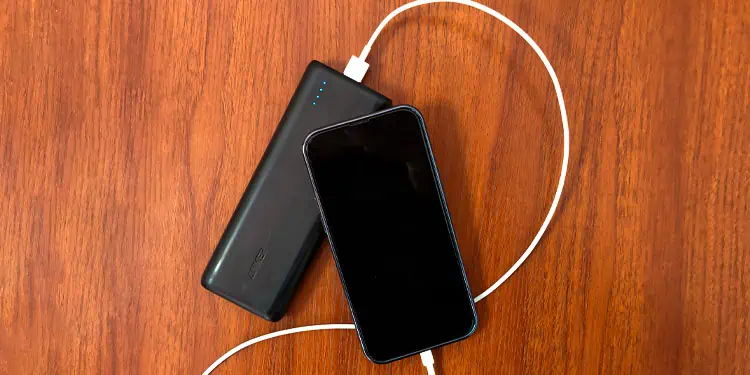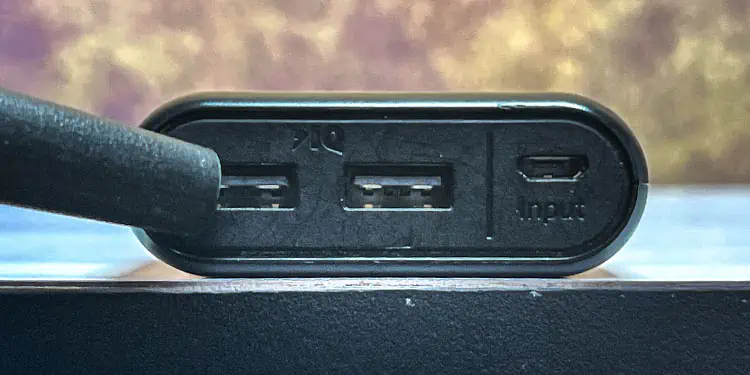Usually, the power bank’s LED will not turn on when it runs into charging issues. In some cases, you will see a charging indication, but the charge level will not increase.
Anything from a broken power cable to a damaged battery could stop the power bank from working. It could also be that the voltage from the power source is not enough to charge the device.
Besides this, extreme temperature also stops the power bank from charging. Its internal circuitry is designed such that the Lithium-ion battery stops charging once it reaches extreme temperatures, preventing the device from permanent damage. So you can also ensure that the power bank is not running too hot before getting into the fixes mentioned below.
Check the Power Cable, Port and Adapter
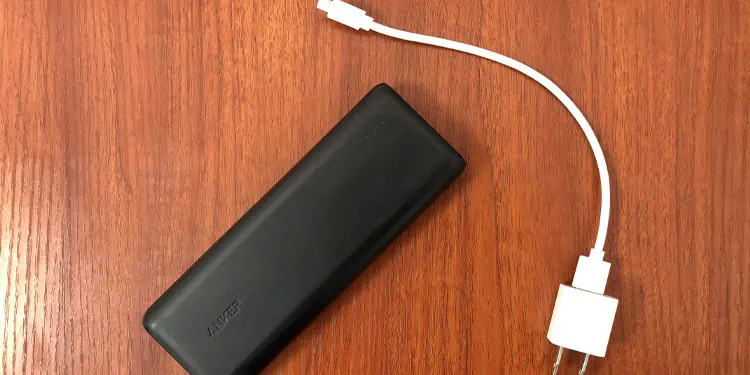
You can first start by ensuring that the power cable and adapter are functional. This may include broken/exposed wires, a bent power port, or even a swollen battery. If the cable or the adapter has visible damage to it, try using a different one.
However, if the power bank itself is damaged or swollen, there is a chance that the battery in your power bank is permanently damaged. If you are still under the warranty, you need to contact your manufacturer.
If the power bank and its charger do not have any visible damage, you can try using the power adapter on another device. The power bank usually charges with a micro-USB or USB Type-C port. So, you can try using the power bank’s power adapter and cable to charge another device that has a micro-USB or USB Type-C charging port.
If it charges another device, the issue is likely with the power bank itself. Furthermore, in order to charge the power bank, its charger should supply the correct amount of voltage and current. Your power bank will have a separate sticker that shows the amount of voltage required to charge it.
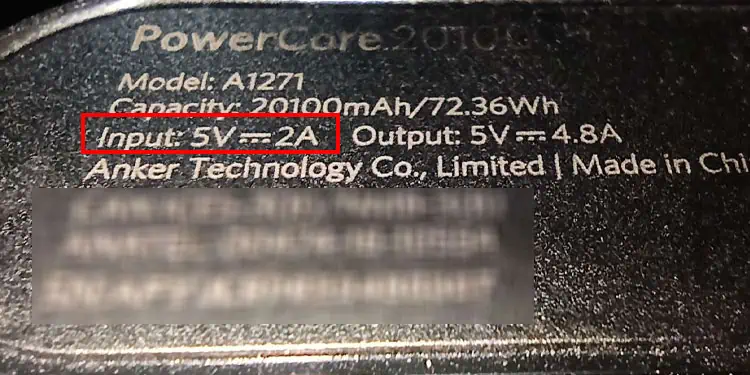
If the charger does not meet the voltage/current requirement, you may face issues when charging the power bank. In such cases, you can try charging the power bank using a different charger that meets the voltage/current requirement.
Clean Input Ports
After a certain time of usage, dust will settle in the input ports on any device. The dust particles can cause an obstruction, which may stop the input port from performing its task. In the case of power banks, dust particles on the power port may stop the device from charging. So, you should clean the ports to ensure that there are no dust particles on the charging ports (both input and output).
- Check the power bank’s power port. Usually, a micro USB port powers your power bank but some power banks may even use a USB type-C or a USB type-A port to charge.
- Use compressed air to blow dust out of the power port.

- If you are using a can of compressed air, do not spray at an angle. Make sure that the can is perpendicular to the ground.
Reboot the Power Bank
Another reason the power bank fails to charge could be due to the residual charge stored in the capacitors inside the power bank. In such cases, you can try force-rebooting your power bank.
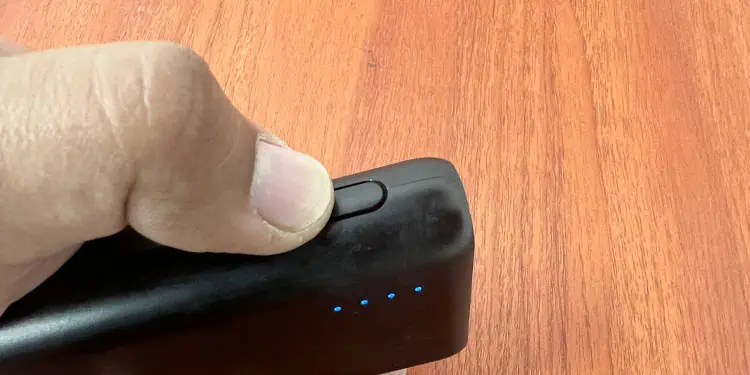
The process of rebooting the power bank can be different. For some power banks, you need to hold the power button for a few seconds to reboot. However, the process can be a little trickier for others and some power banks may not provide a power button at all.
To make sure that you follow the right steps, you can refer to the power banks user manual to reboot. If the user manual does not have the steps to reboot the power bank, it may not support a reboot.
Use Wall Outlet to Charge
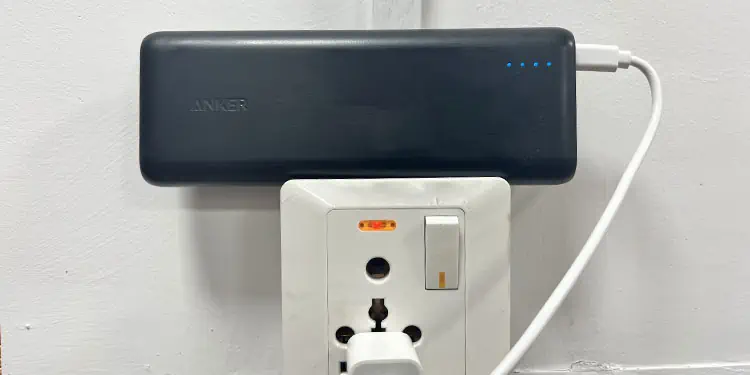
The power bank may not get the required amount of voltage when charging directly from a USB outlet. Although the power bank does not need much voltage to charge, a USB port may not supply a sufficient amount.
If that happens, the power bank may not charge due to the low voltage supply. In that case, charge the power bank using a power adapter directly connected to a wall outlet.
Depending on the power bank, it may use a micro USB, USB Type-A, or Type-C power port to charge. Besides this, the device also has a few USB ports to supply power to your mobile devices.
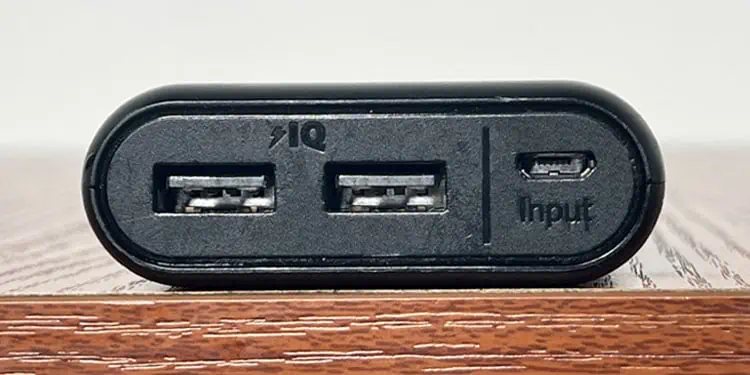
The power bank will not charge if you have plugged the power source into a USB-out port. To charge the battery in the power bank, you need to insert the power port into the USB-in port. The USB-in port is usually indicated with the word IN written beside it.
In some power banks, you may even notice a plug icon that indicates the charging plug.
Discharge Battery and Charge Again
Sometimes, the power bank will not indicate that it is charging unless you charge a device with it. This can happen when there is an interruption in the flow of charge. To fix this you need to temporarily discharge the charge on your power bank..
- Disconnect the power bank from a power source and charge any mobile device for a few minutes.
- Now, disconnect the mobile device from the power bank.
- Charge the power bank directly from a wall outlet and check if the charging LED blinks.

Also, you should not charge a device simultaneously when charging the power bank. When you are charging and discharging the power bank at the same time, it may seem like the power bank is not charging.
Repair/Replace Power Bank
If the warranty on the power bank is not void, you can get a replacement. In such a case, you need to contact the manufacturer. However, in case the power bank has physical damage on ports and cables, do not make attempt to fix it without expert supervision and directly take it to a local repair shop.

